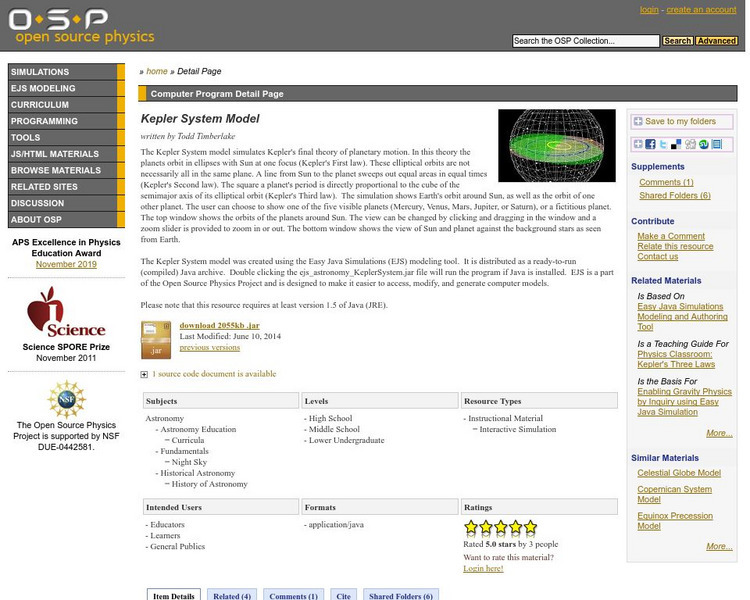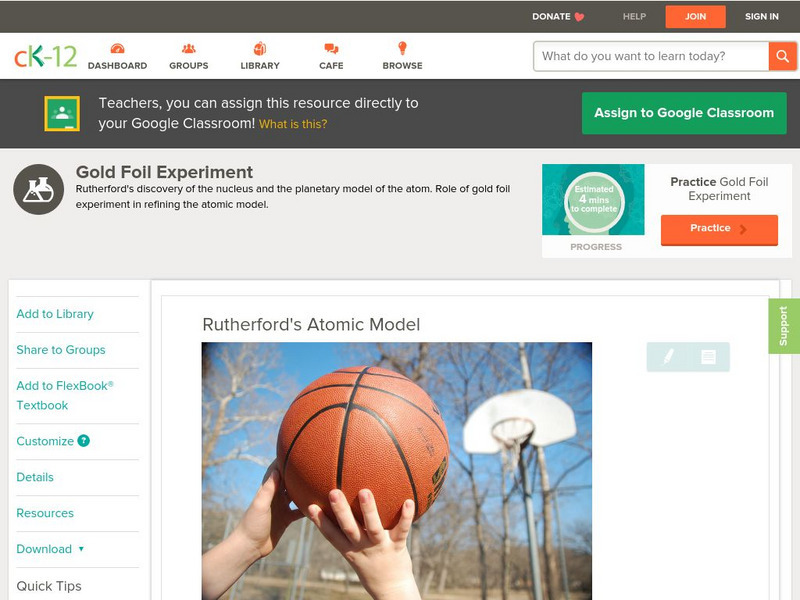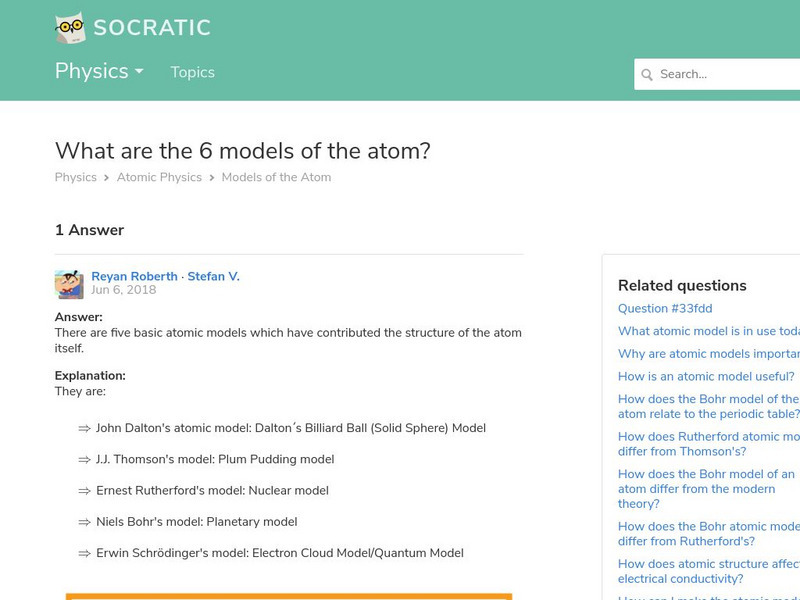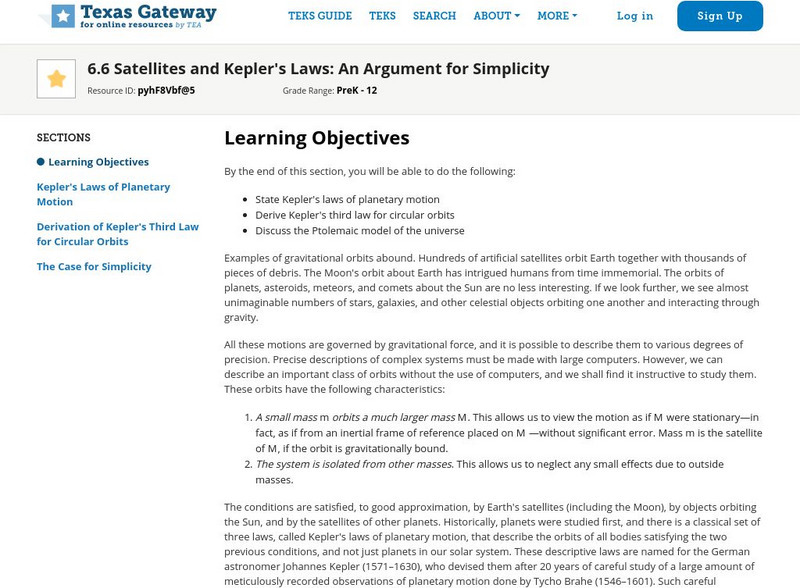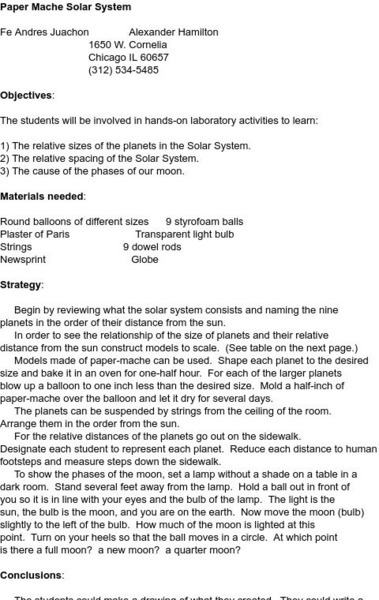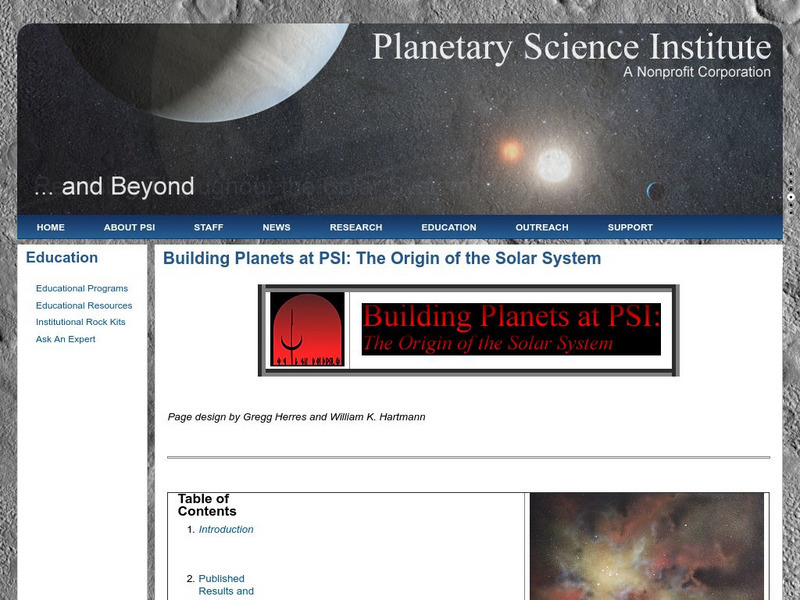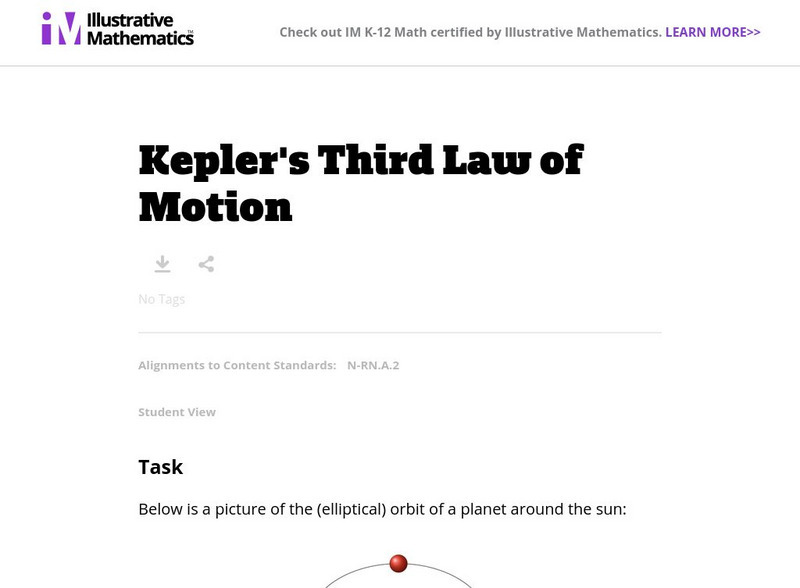Hi, what do you want to do?
Curated OER
Scientific Inquiry: Periodic Motion
Students construct their own pendulum. In this physics lesson, students design an experiment to find the factors affecting its period. They formulate a conclusion based on experimental data.
PBS
Pbs Learning Media: Solar System Scale Model
Teach the concept of scale models and the size of the solar system through this extensive lesson plan. Students will learn about scale models, estimate which objects to use to create a scale model of Earth and Sun, and figure out how far...
American Association of Physics Teachers
Com Padre Digital Library: Open Source Physics: Kepler System Model
This site from Open Source Physics offers a file with a simulation of Kepler's theory of planetary motion, tested with the Earth rotating around the sun and another planet of the user's choosing. The download requires Java.
American Association of Physics Teachers
Com Padre Digital Library: Open Source Physics: Copernican System Model
The Copernican system of planetary motion is clarified in this simulation.
CK-12 Foundation
Ck 12: Chemistry: Gold Foil Experiment: Rutherford's Atomic Model
[Free Registration/Login may be required to access all resource tools.] This site explains Rutherford's discovery of the nucleus and the planetary model of the atom and the role of gold foil experiment in refining the atomic model. It...
CK-12 Foundation
Ck 12: Physical Science: Rutherford's Atomic Model
[Free Registration/Login may be required to access all resource tools.] Rutherford's discovery of the nucleus and his planetary model of the atom.
National Geographic
National Geographic: Planetary Size and Distance Comparison
Students review the sizes of planets and their order relative to the Sun. They then learn about astronomical uses and create a model of the solar system that reflects planetary distances. Includes handouts and worksheets as well as a...
Other
Cronodon: Atoms Models of the Atom
Presents models of the atom developed by Thomson, Rutherford, Bohr, and Schrodinger. Includes successes and failures of each, illustrations, and detailed descriptions. Also discusses Dirac's model of the atom and introduces quantum...
CK-12 Foundation
Ck 12: The Bohr Model of the Atom
[Free Registration/Login may be required to access all resource tools.] Students will learn about the history of atomic theory, and the development of the Bohr model of the atom. Includes a simulation for exploring the Bohr Model.
Simon Fraser University
Chem1 Virtual Textbook: Bohr's Theory
Acting as part of an overview on quantum theory, this section of the site answers the question, "How did Bohr's theory save the planetary model, for a while?" A section below also discusses the primary problems with Bohr's theory.
University Corporation for Atmospheric Research
Ucar: High Altitude Observatory: Tycho Brahe (1546 1601)
This site contains information about Brahe's contributions to astronomy, and also discusses his planetary model.
American Association of Physics Teachers
Com Padre Digital Library: Open Source Physics: Celestial Globe Model
Users have the opportunity to adjust several variables in this simulation demonstrating the Ancient Greek's Two Sphere Universe theory.
Concord Consortium
Concord Consortium: Molecular Workbench: Molecular Planetary Gears
Observe the movements of a molecular planetary gear.
Other
Socratic: What Are the 6 Models of the Atom?
Brief explanation of six major models of the atom along with illustrations. Covers the Greek model (Democritus), John Dalton, J.J. Thomson, Ernest Rutherford, Niels Bohr, and the modern electron cloud or quantum mechanics model.
CK-12 Foundation
Ck 12: Chemistry: Bohr's Atomic Model
[Free Registration/Login may be required to access all resource tools.] Explains the basic principles of the Bohr hydrogen atom.
Other
Lunar and Planetary Institute: Make a Comet
Hands-on activity allows children to learn about comets by creating their own models using art supplies.
Texas Education Agency
Texas Gateway: Satellites and Kepler's Laws: An Argument for Simplicity
By the end of this section, you will be able to state Kepler's laws of planetary motion, derive Kepler's third law for circular orbits, and discuss the Ptolemaic model of the universe.
Other
The Ptolemaic Model of the Planetary System
An easy-to-read description and history of Ptolemy's geocentric model of the universe. Geocentric means that Ptolemy believed the Earth was the center of the universe.
OpenStax
Open Stax: Satellites and Kepler's Laws: An Argument for Simplicity
In the following interactive students will begin to understand the laws of Kepler regarding planetary motion and derive the third law of Kepler for circular orbits. They will also discuss the Ptolemaic model of the universe.
PBS
Pbs Learning Media: Scaled Images of the Solar System
Use the following lithographs to envision the scale of our solar system. View different models of planets at different scales, an infographic about the relative sizes of the planets and distance from the sun, and images of the largest...
NASA
Dawn Mission: Dawn Classrooms: The History and Discovery of Asteroids
Student groups explore scientific breakthroughs and the development of technologies that eventually led to asteroid discovery aboard the Dawn space mission. Learning module components include jigsaw reading, model building, math...
Science and Mathematics Initiative for Learning Enhancement (SMILE)
Smile: Paper Mache Solar System
This site from the Illinois Institute of Technology provides a set of directions for the creation of a solar system model out of paper mache. Includes orbital distances and planet diameters for the nine planets. Great idea for a student...
Other
Planetary Science Institute: Building Planets at Psi
An article about the Planetary Science Institutes's advanced computer software, which it uses to model the way the solar system may have formed. Includes some insights into the results already obtained.
Illustrative Mathematics
Illustrative Mathematics: N rn.a.2: Kepler's Third Law of Motion
The purpose of this task is to solve some expressions requiring fractional exponents in the modeling context of planetary motion. Aligns with N-RN.A.2.







